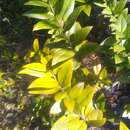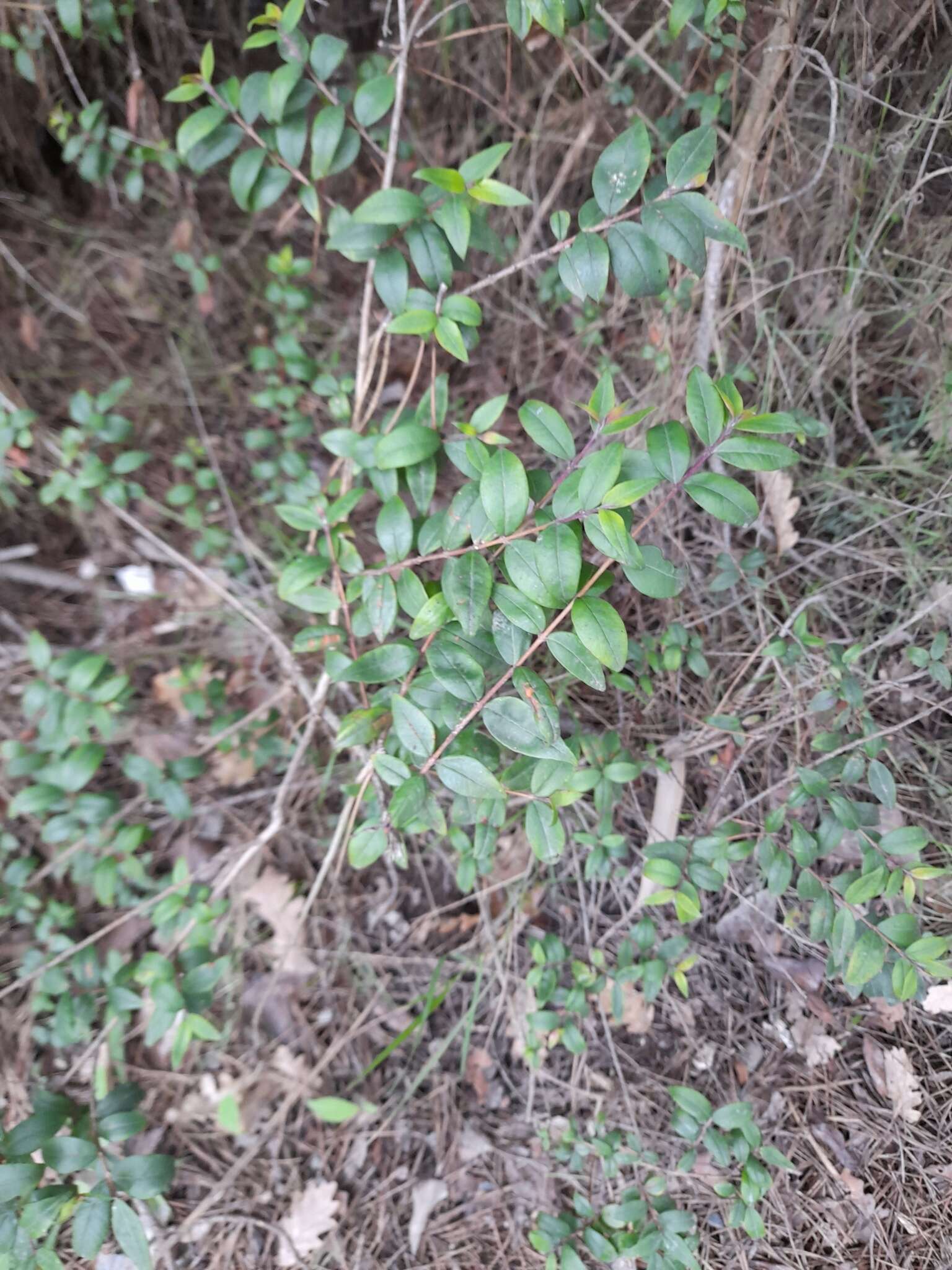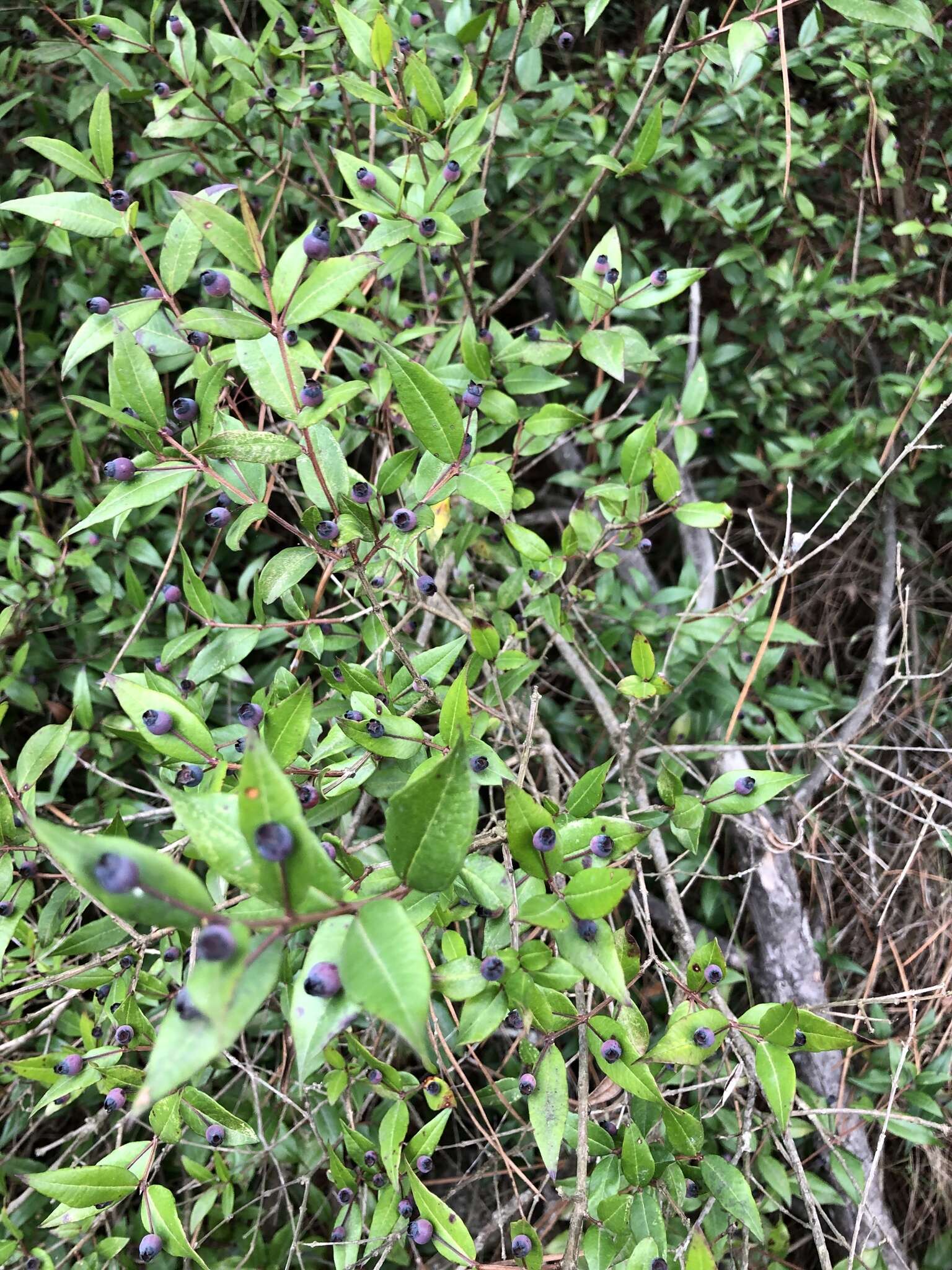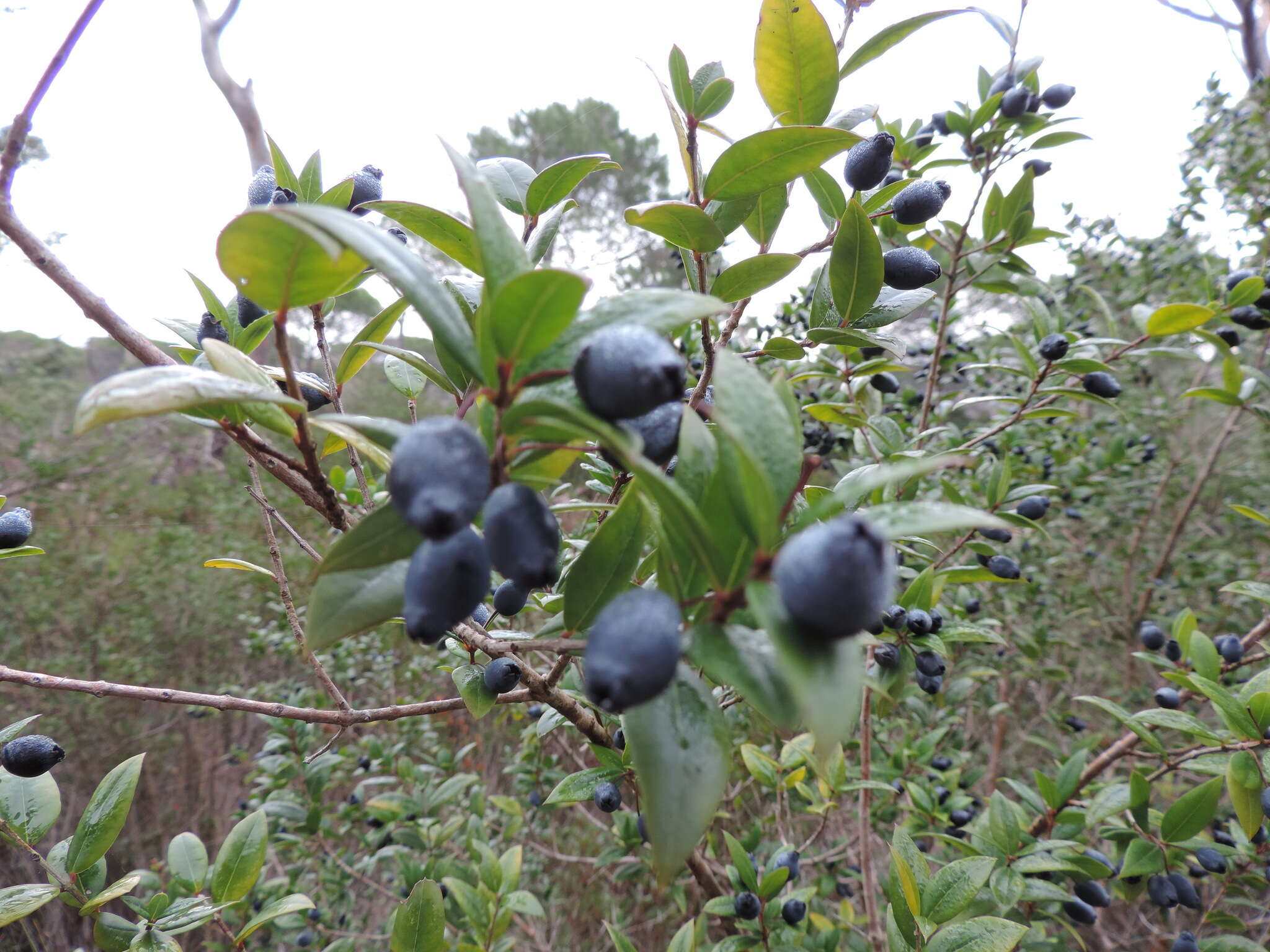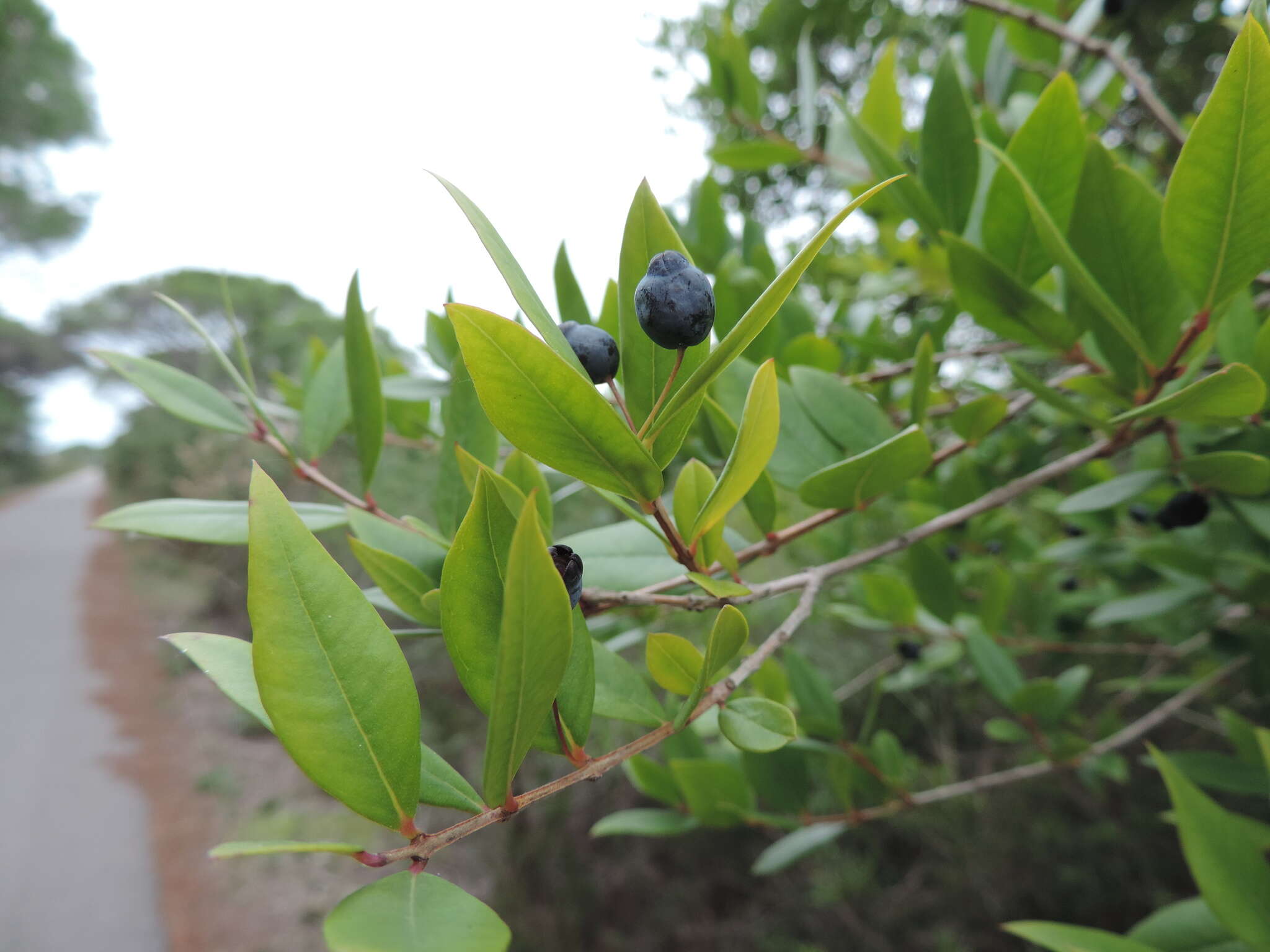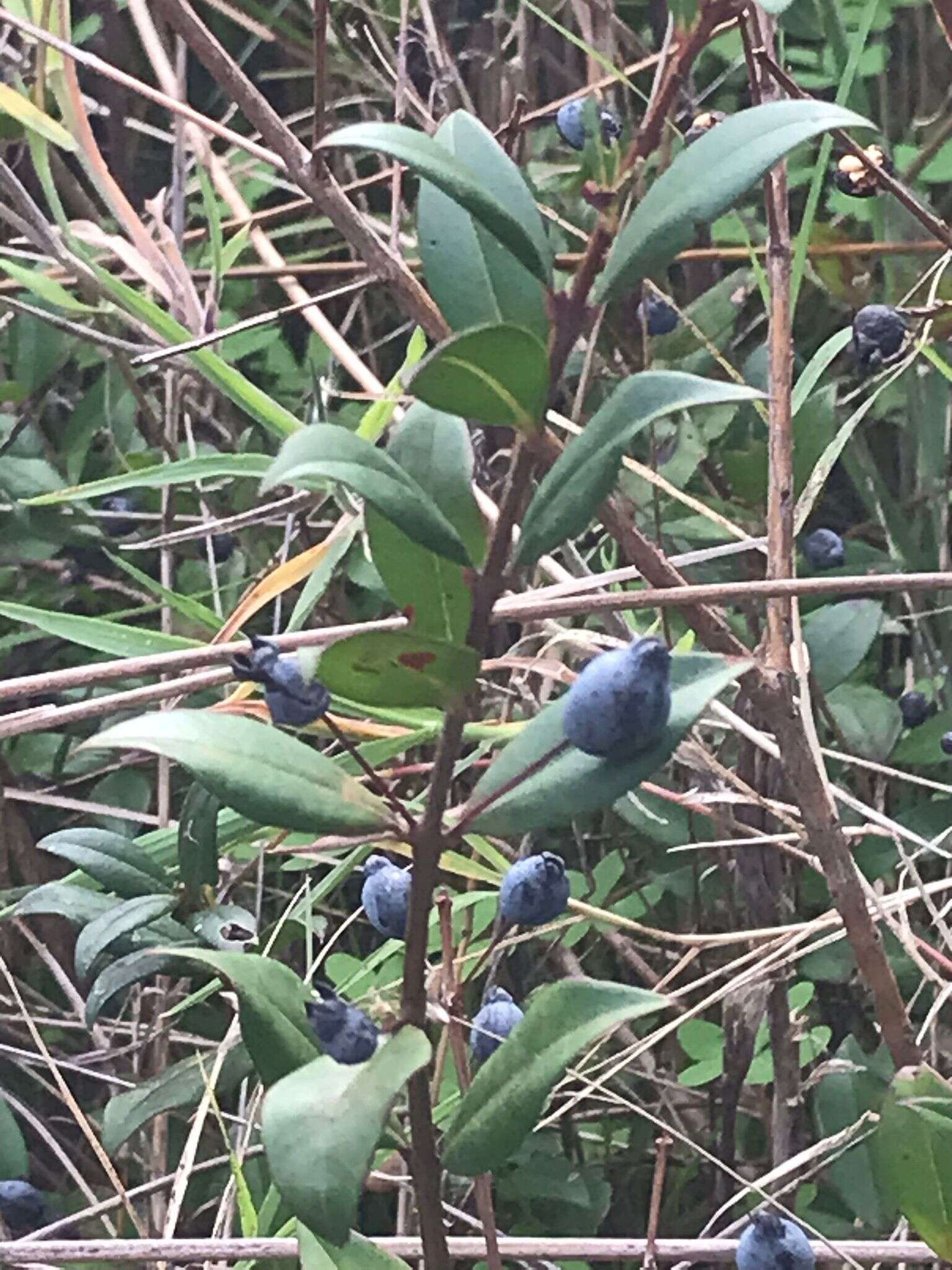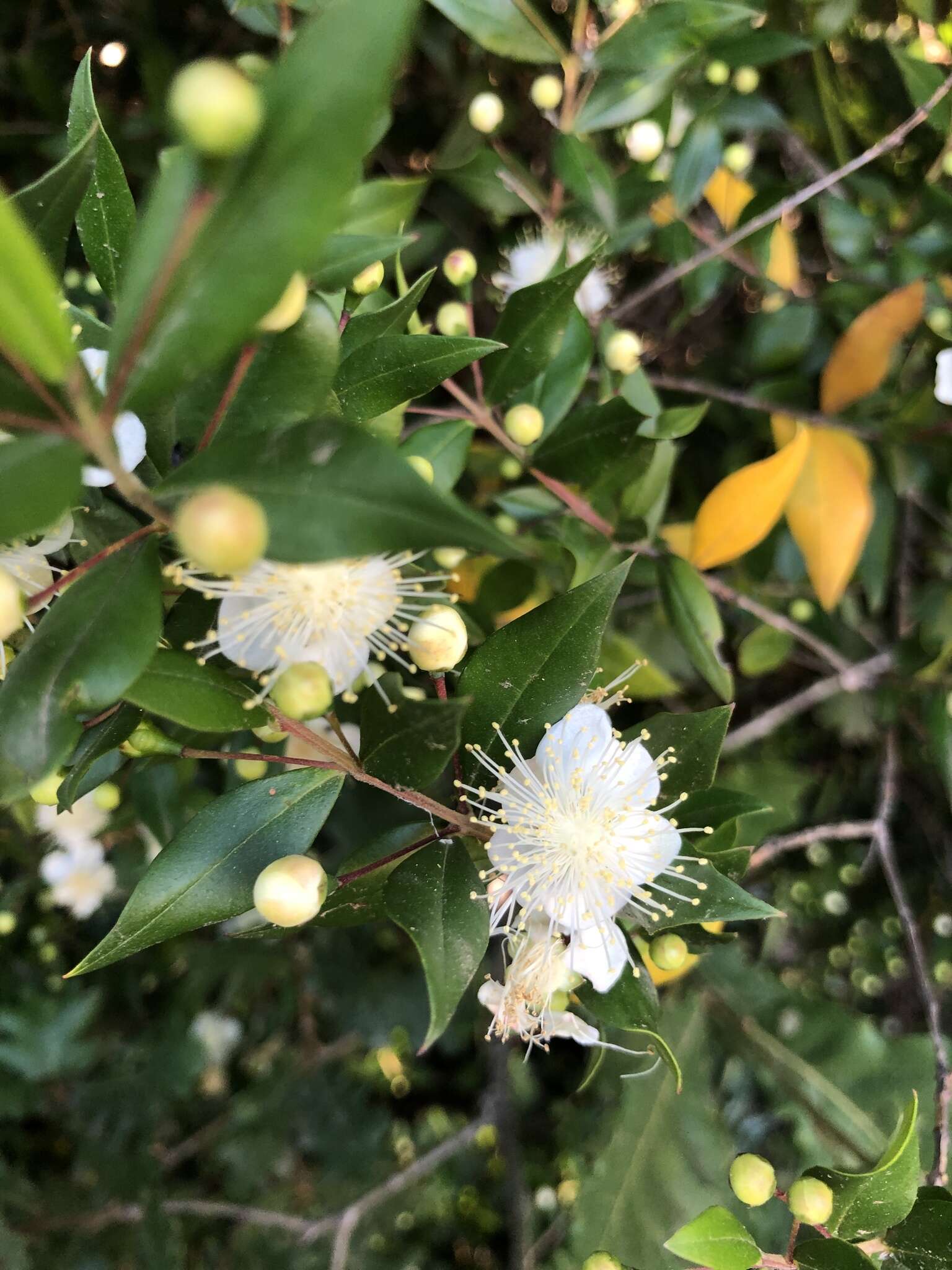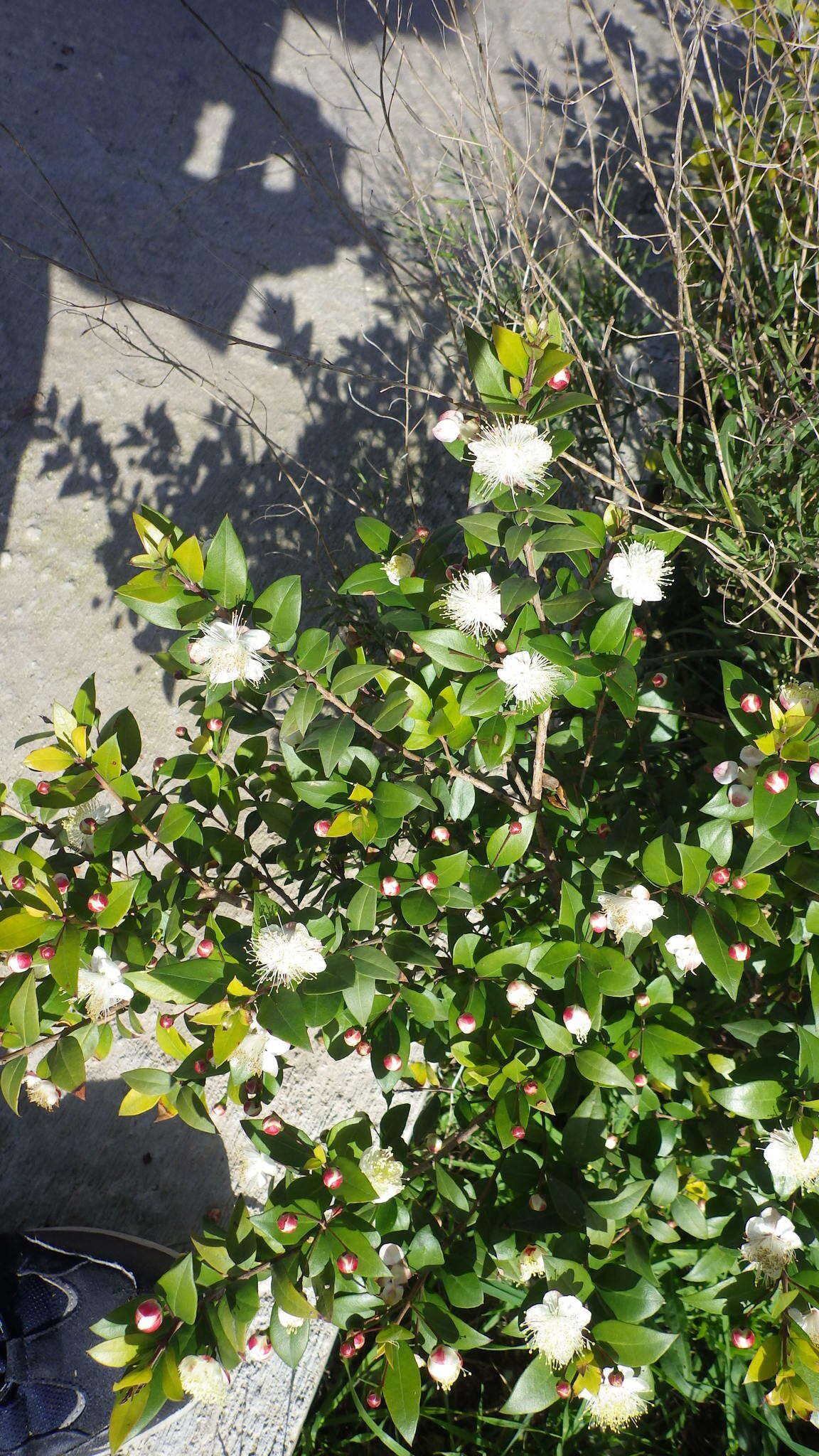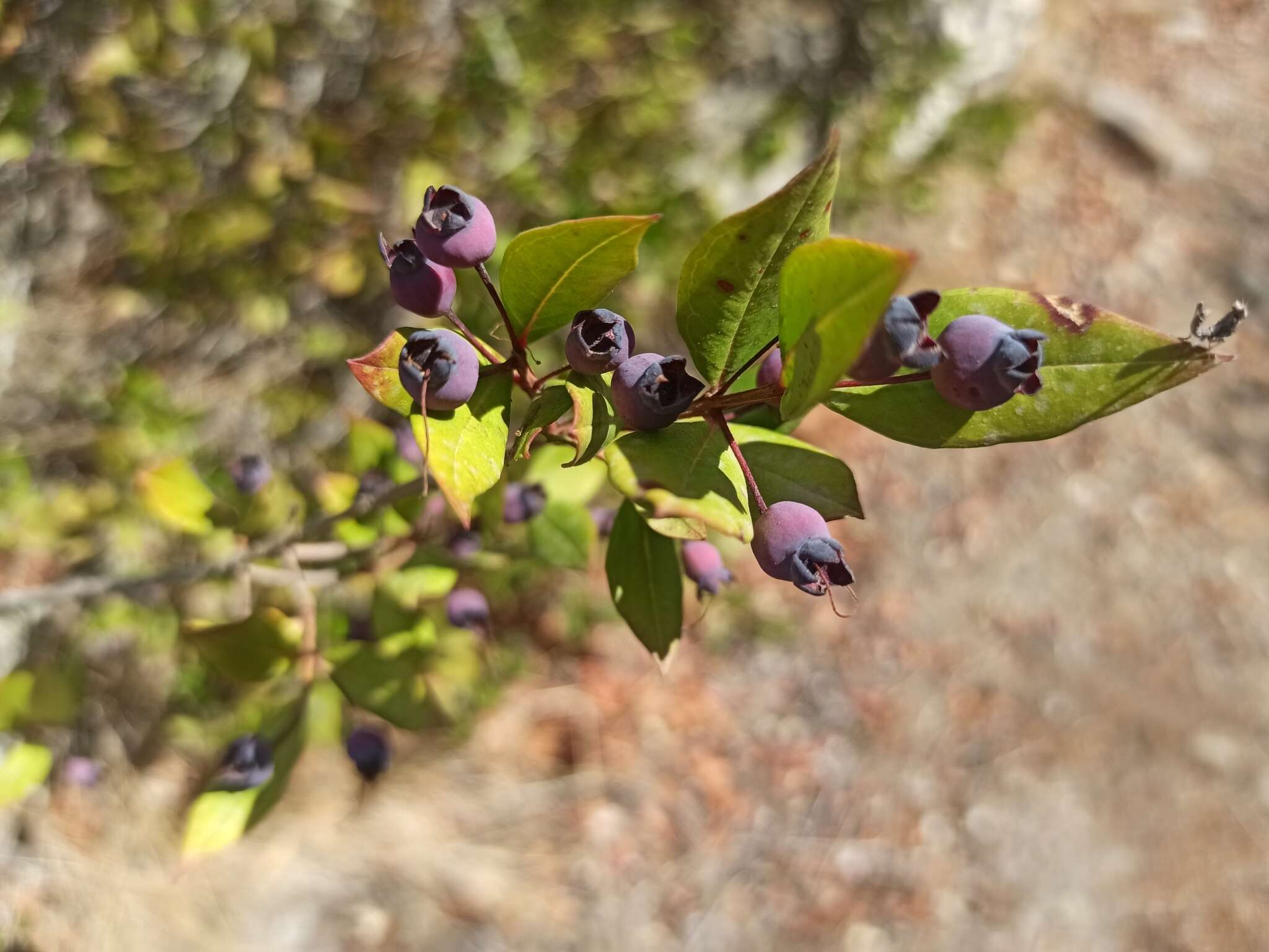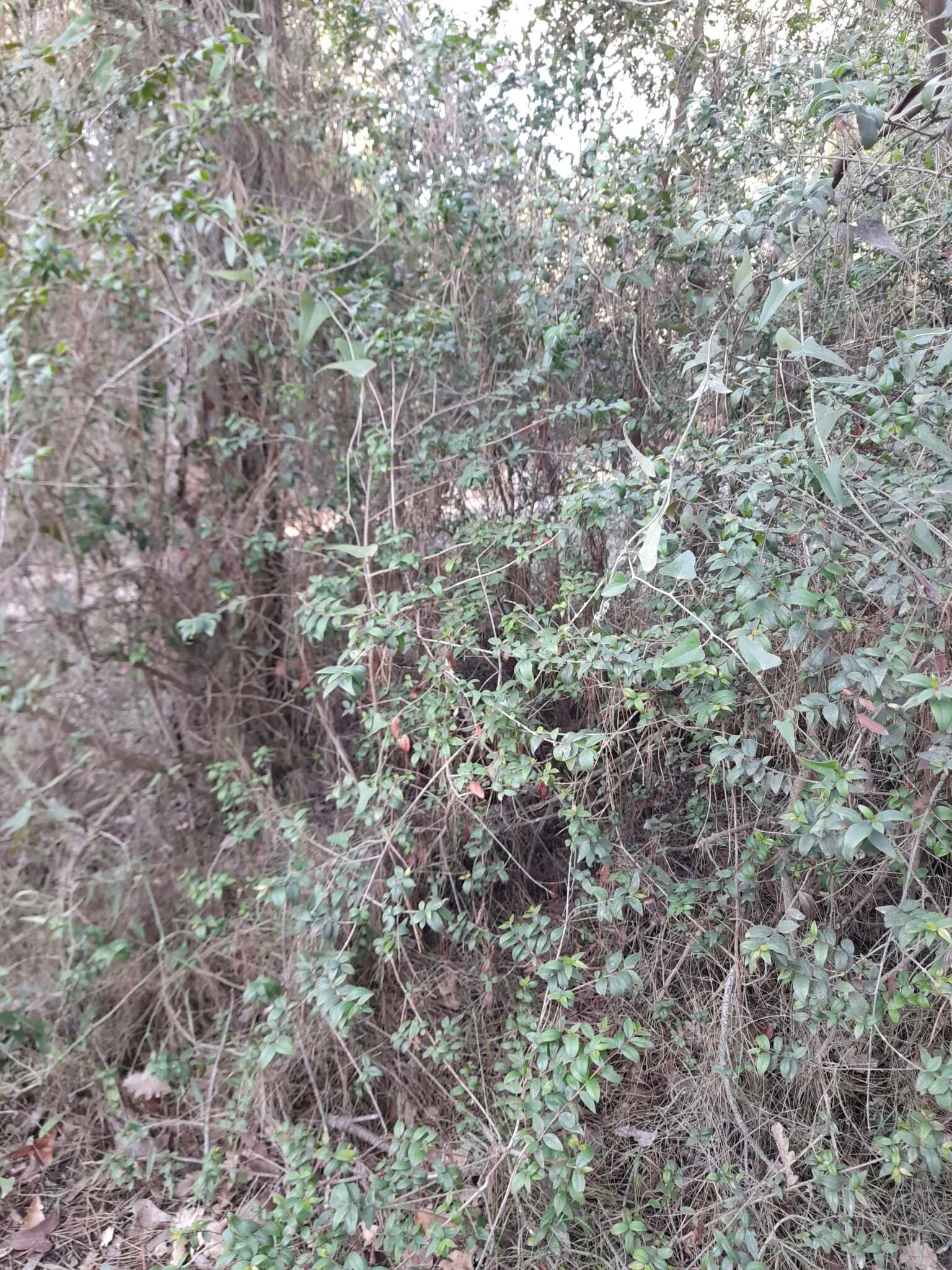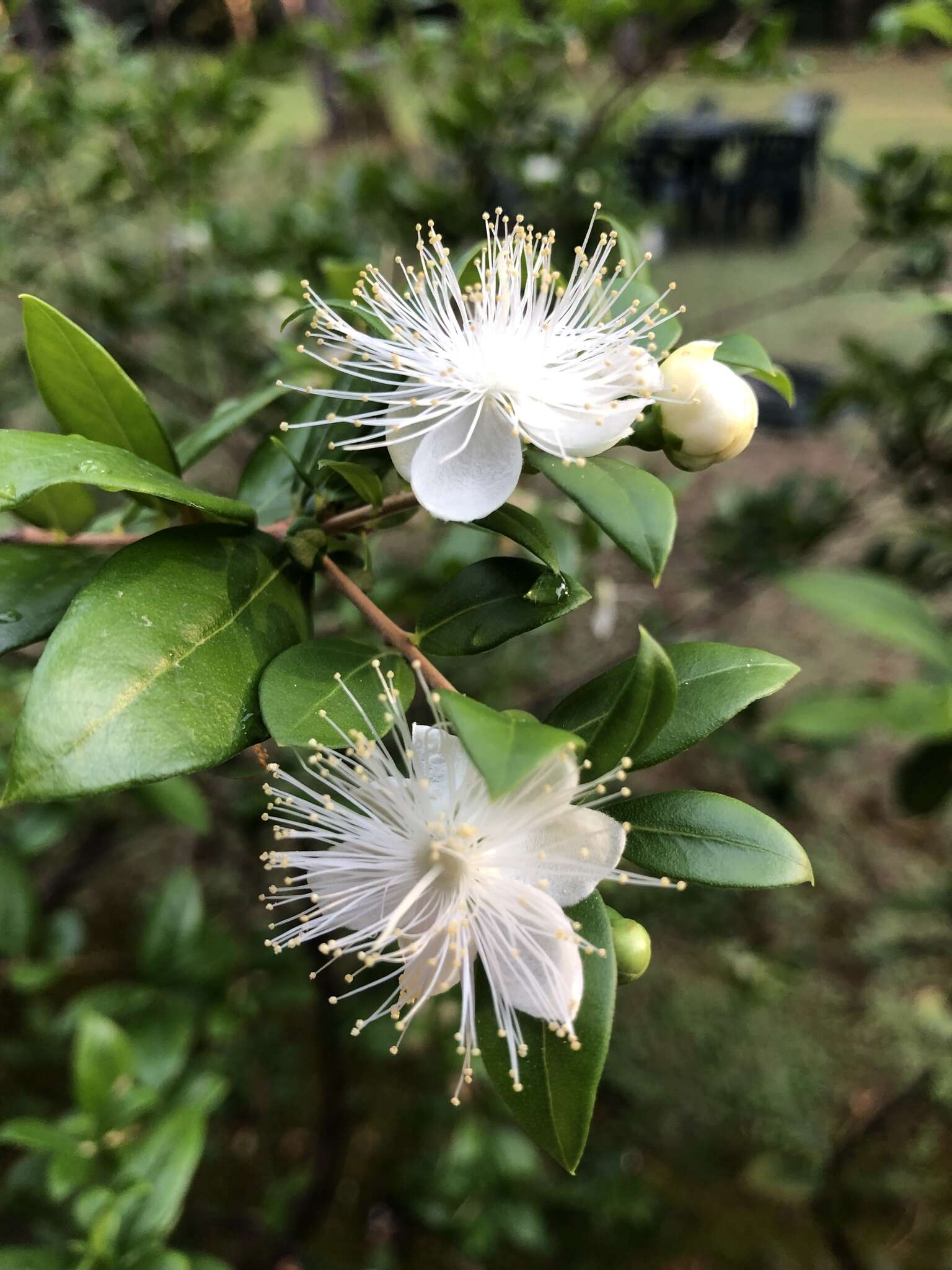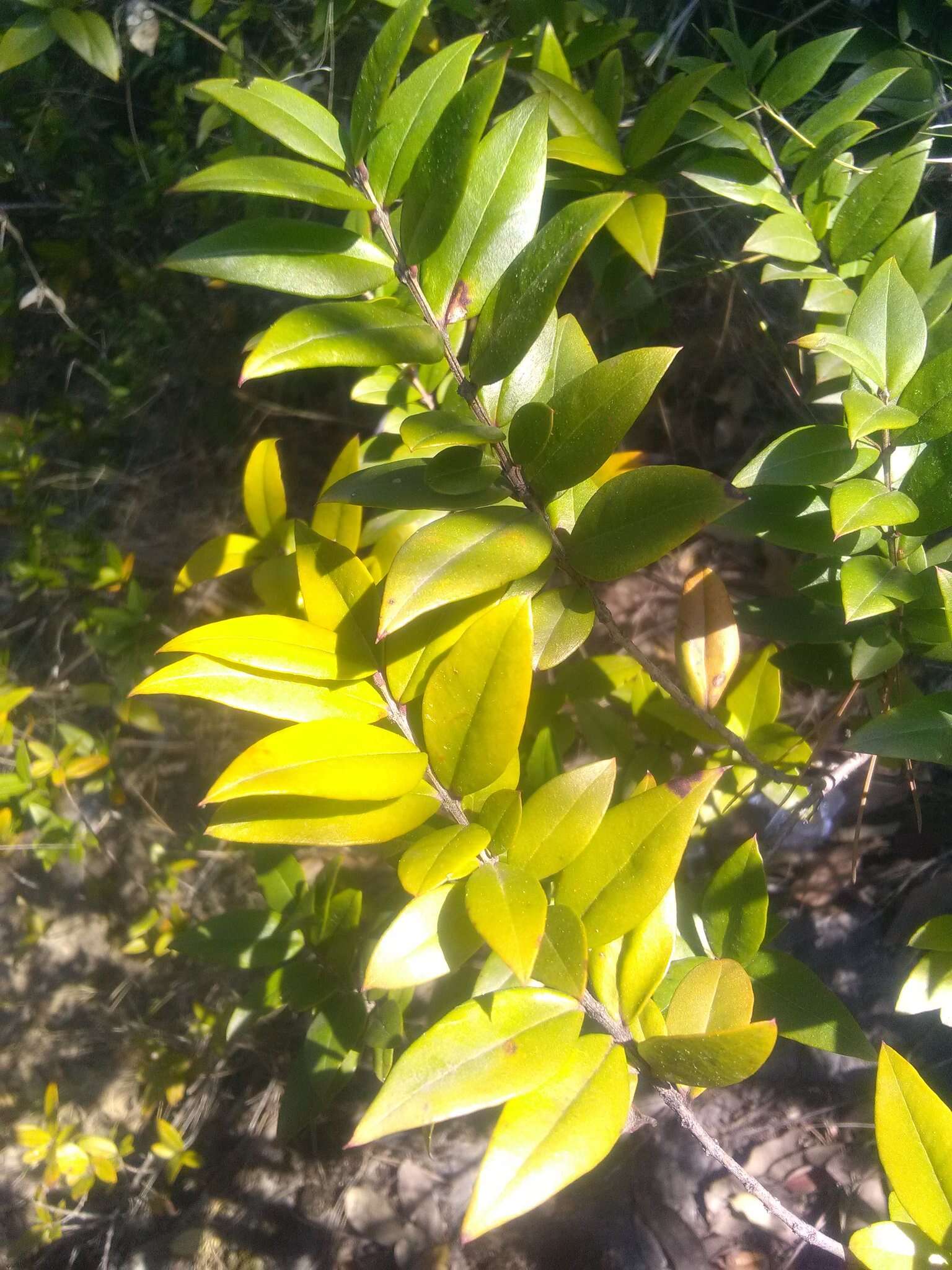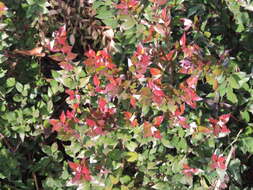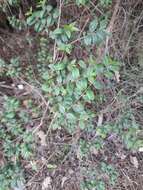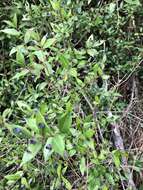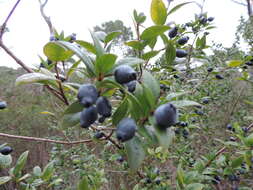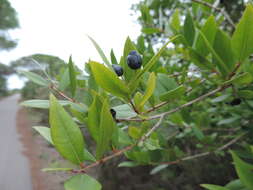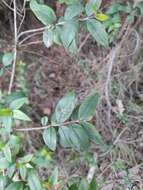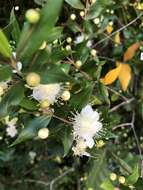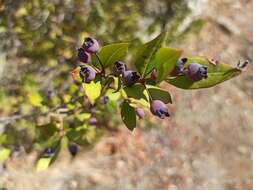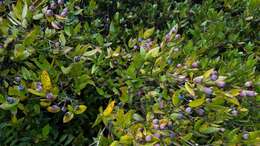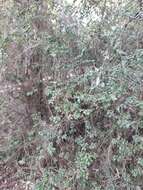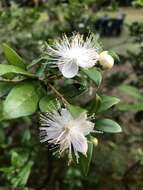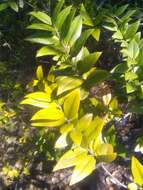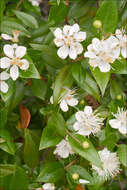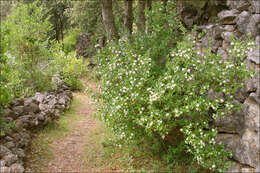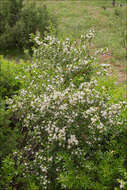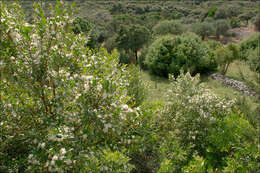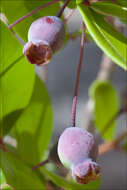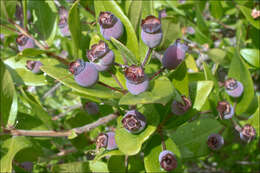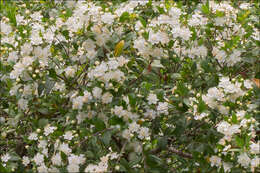-
-
-
-
-
-
-
-
-
-
-
-
-
-
-
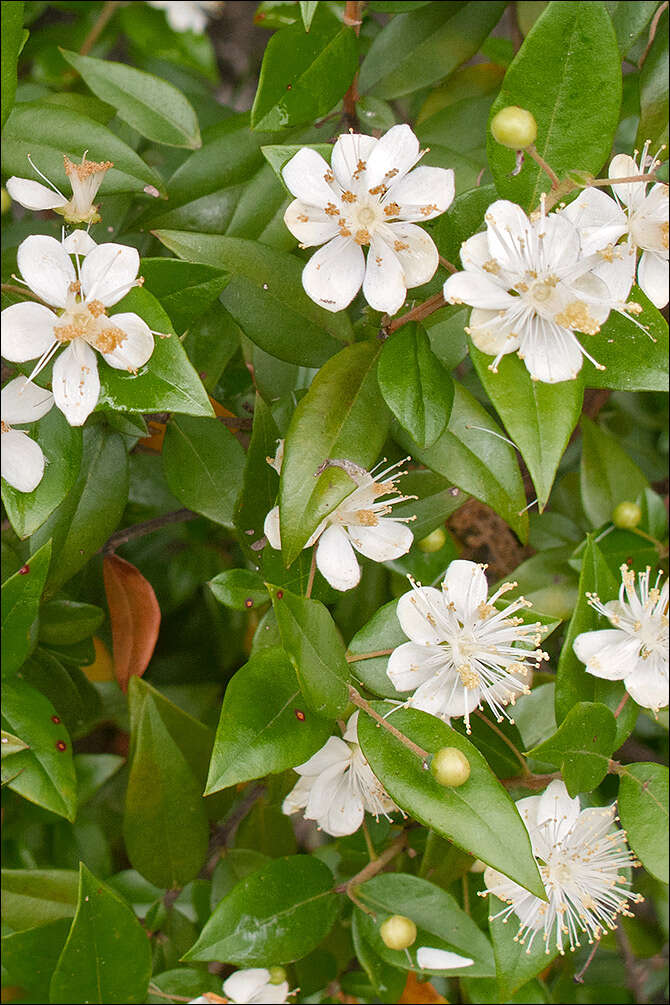
Myrtus communis ssp. communis L., syn.: Myrtus acuta Mill., Myrtus acutifolia (L.) Sennen & Teodoro and about 50 other namesFamily: MyrtaceaeEN: Common Myrtle, Corsican Pepper, DE: Echte MyrteSlo.: navadna mirtaDat.: July 03. 2013Lat.: 44.63677 Long.: 14.39346Code: Bot_0729/2013_IMG3599Place: Adriatic Sea, island Loinj, south of village St. Jakov, next to the trail and about halfway to the south beach of the village, Kvarner archipelago, Rijeka region, Croatia. Substratum: soil.Comment (pertains to pictures in the Flickr album Myrtus communis): Myrtus communis is an important plant in several old cultures from antic times on it is a symbol of beauty, peace and love since classical times. It is known and has been cultivated and adorned in Mediterranean region for a very long time, so that botanists actually do not know exactly where the plant origins. Namely, Myrtaceae are predominantly tropic and sub-tropic plants. Some professionals believe that it is an autochthone species in Mediterranean region, others think that it was brought from Asia millennia ago. Today it is known from all countries around the Mediterranean Sea. It is rare in Slovenia but very common in Croatia, particularly on the Adriatic islands. Flowering bushes are very beautiful in spring time, but also evergreen, shiny leaves and bluish-black berries when ripe do not fall behind. Leaves, bark and berries of this plant contain fragrant etheric oils, which are widely used in cosmetic products. In close contact with humans for so long time many other uses of this extraordinary plant have been developed.Ref.:(1) T. Nikoli, Flora Croatica, Vaskularna flora Republike Hrvatske, Vol. 3. Alfa d.d.. Zagreb (2020) p 173,(2) M. Blamey, C. Grey-Wilson, Wild Flowers of the Mediterranean, A & C Black, London (2005), p 150.(3) W.K. Rottensteiner, Exkursionsflora fr Istrien, Verlag des Naturwissenschaftlichen Vereins Krten (2014), p 604.(4) A. Martini et all., Mala Flora Slovenije (Flora of Slovenia - Key) (in Slovenian), Tehnina Zaloba Slovenije (2007), p 328. (5) R. Brus, Drevesa in grmi Jadrana (Trees and bushes of Adria) (in Slovene), Modrijan Pub, (2012), p 303.
-
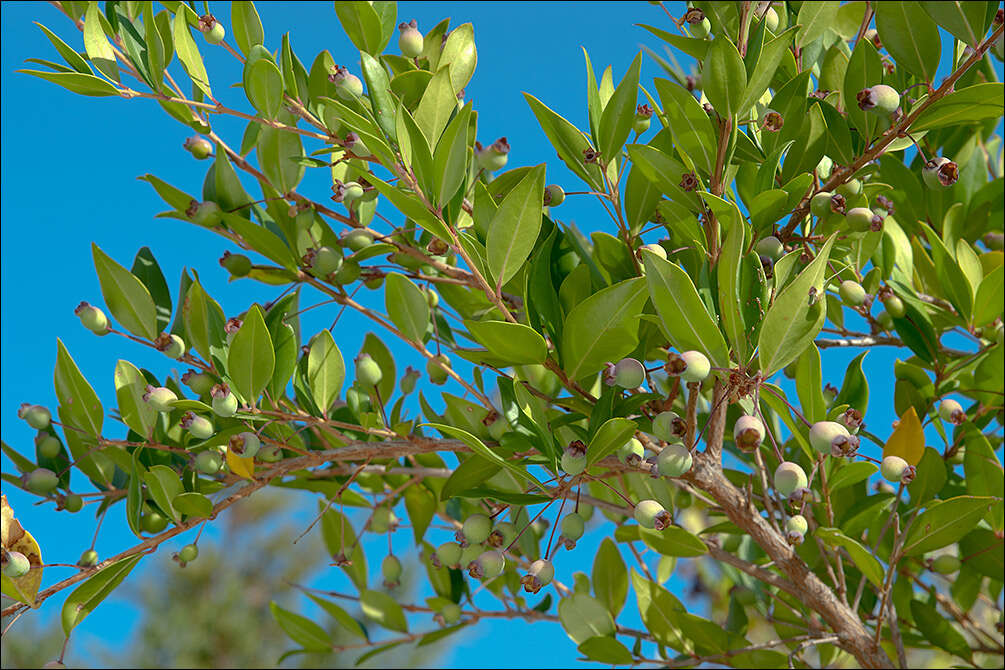
Myrtus communis ssp. communis L., syn.: Myrtus acuta Mill., Myrtus acutifolia (L.) Sennen & Teodoro and about 50 other namesFamily: MyrtaceaeEN: Common Myrtle, Corsican Pepper, DE: Echte MyrteSlo.: navadna mirtaDat.: Aug. 26. 2013Lat.: 44.64323 Long.: 14.39705Code: Bot_0746/2013_DSC7734Place: Adriatic Sea, island Loinj, north outskirts of village St. Jakov, near village graveyard, Kvarner archipelago, Rijeka region, Croatia. Habitat: macchia, almost flat terrain; calcareous, skeletal ground; sunny, warm and dry place; elevation 12 m (40 feet) (1) and 40 m (130 feet) (2); average precipitations ~ 1.000 mm/year, average temperature 12-14 deg C, Sub-Mediterranean phytogeographical region. Substratum: soil.Comment (pertains to pictures in the Flickr album Myrtus communis): Myrtus communis is an important plant in several old cultures from antic times on it is a symbol of beauty, peace and love since classical times. It is known and has been cultivated and adorned in Mediterranean region for a very long time, so that botanists actually do not know exactly where the plant origins. Namely, Myrtaceae are predominantly tropic and sub-tropic plants. Some professionals believe that it is an autochthone species in Mediterranean region, others think that it was brought from Asia millennia ago. Today it is known from all countries around the Mediterranean Sea. It is rare in Slovenia but very common in Croatia, particularly on the Adriatic islands. Flowering bushes are very beautiful in spring time, but also evergreen, shiny leaves and bluish-black berries when ripe do not fall behind. Leaves, bark and berries of this plant contain fragrant etheric oils, which are widely used in cosmetic products. In close contact with humans for so long time many other uses of this extraordinary plant have been developed.Ref.:(1) T. Nikoli, Flora Croatica, Vaskularna flora Republike Hrvatske, Vol. 3. Alfa d.d.. Zagreb (2020) p 173,(2) M. Blamey, C. Grey-Wilson, Wild Flowers of the Mediterranean, A & C Black, London (2005), p 150.(3) W.K. Rottensteiner, Exkursionsflora fr Istrien, Verlag des Naturwissenschaftlichen Vereins Krten (2014), p 604.(4) A. Martini et all., Mala Flora Slovenije (Flora of Slovenia - Key) (in Slovenian), Tehnina Zaloba Slovenije (2007), p 328. (5) R. Brus, Drevesa in grmi Jadrana (Trees and bushes of Adria) (in Slovene), Modrijan Pub, (2012), p 303.
-

Myrtus communis ssp. communis L., syn.: Myrtus acuta Mill., Myrtus acutifolia (L.) Sennen & Teodoro and about 50 other namesFamily: MyrtaceaeEN: Common Myrtle, Corsican Pepper, DE: Echte MyrteSlo.: navadna mirtaDat.: July 03. 2013Lat.: 44.63677 Long.: 14.39346Code: Bot_0729/2013_IMG3599Place: Adriatic Sea, island Loinj, south of village St. Jakov, next to the trail and about halfway to the south beach of the village, Kvarner archipelago, Rijeka region, Croatia. Substratum: soil.Comment (pertains to pictures in the Flickr album Myrtus communis): Myrtus communis is an important plant in several old cultures from antic times on it is a symbol of beauty, peace and love since classical times. It is known and has been cultivated and adorned in Mediterranean region for a very long time, so that botanists actually do not know exactly where the plant origins. Namely, Myrtaceae are predominantly tropic and sub-tropic plants. Some professionals believe that it is an autochthone species in Mediterranean region, others think that it was brought from Asia millennia ago. Today it is known from all countries around the Mediterranean Sea. It is rare in Slovenia but very common in Croatia, particularly on the Adriatic islands. Flowering bushes are very beautiful in spring time, but also evergreen, shiny leaves and bluish-black berries when ripe do not fall behind. Leaves, bark and berries of this plant contain fragrant etheric oils, which are widely used in cosmetic products. In close contact with humans for so long time many other uses of this extraordinary plant have been developed.Ref.:(1) T. Nikoli, Flora Croatica, Vaskularna flora Republike Hrvatske, Vol. 3. Alfa d.d.. Zagreb (2020) p 173,(2) M. Blamey, C. Grey-Wilson, Wild Flowers of the Mediterranean, A & C Black, London (2005), p 150.(3) W.K. Rottensteiner, Exkursionsflora fr Istrien, Verlag des Naturwissenschaftlichen Vereins Krten (2014), p 604.(4) A. Martini et all., Mala Flora Slovenije (Flora of Slovenia - Key) (in Slovenian), Tehnina Zaloba Slovenije (2007), p 328. (5) R. Brus, Drevesa in grmi Jadrana (Trees and bushes of Adria) (in Slovene), Modrijan Pub, (2012), p 303.
-
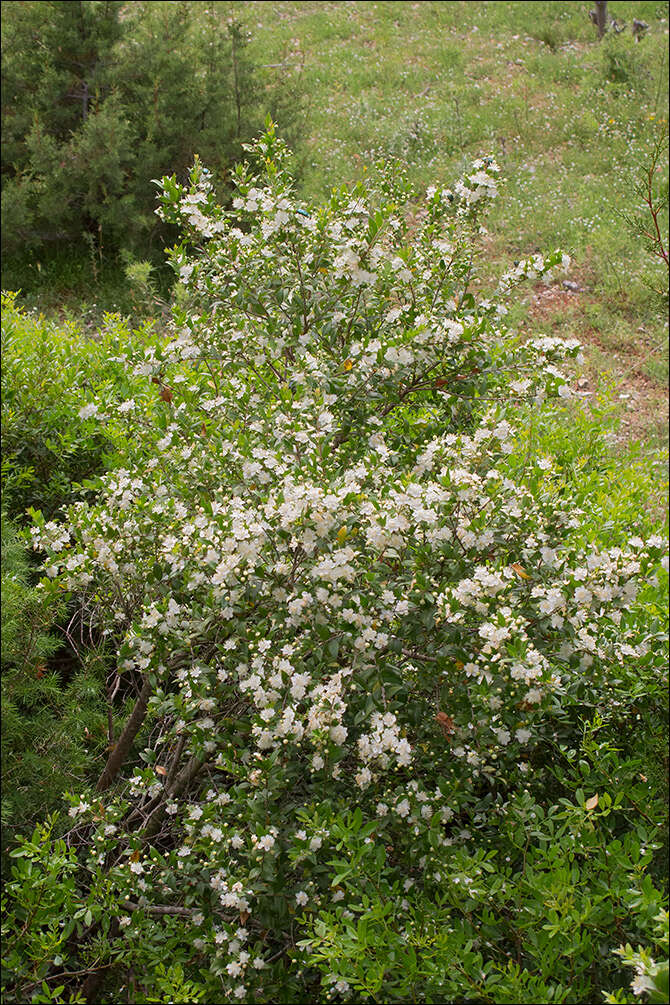
Myrtus communis ssp. communis L., syn.: Myrtus acuta Mill., Myrtus acutifolia (L.) Sennen & Teodoro and about 50 other namesFamily: MyrtaceaeEN: Common Myrtle, Corsican Pepper, DE: Echte MyrteSlo.: navadna mirtaDat.: July 03. 2013Lat.: 44.63677 Long.: 14.39346Code: Bot_0729/2013_IMG3599Place: Adriatic Sea, island Loinj, south of village St. Jakov, next to the trail and about halfway to the south beach of the village, Kvarner archipelago, Rijeka region, Croatia. Substratum: soil.Comment (pertains to pictures in the Flickr album Myrtus communis): Myrtus communis is an important plant in several old cultures from antic times on it is a symbol of beauty, peace and love since classical times. It is known and has been cultivated and adorned in Mediterranean region for a very long time, so that botanists actually do not know exactly where the plant origins. Namely, Myrtaceae are predominantly tropic and sub-tropic plants. Some professionals believe that it is an autochthone species in Mediterranean region, others think that it was brought from Asia millennia ago. Today it is known from all countries around the Mediterranean Sea. It is rare in Slovenia but very common in Croatia, particularly on the Adriatic islands. Flowering bushes are very beautiful in spring time, but also evergreen, shiny leaves and bluish-black berries when ripe do not fall behind. Leaves, bark and berries of this plant contain fragrant etheric oils, which are widely used in cosmetic products. In close contact with humans for so long time many other uses of this extraordinary plant have been developed.Ref.:(1) T. Nikoli, Flora Croatica, Vaskularna flora Republike Hrvatske, Vol. 3. Alfa d.d.. Zagreb (2020) p 173,(2) M. Blamey, C. Grey-Wilson, Wild Flowers of the Mediterranean, A & C Black, London (2005), p 150.(3) W.K. Rottensteiner, Exkursionsflora fr Istrien, Verlag des Naturwissenschaftlichen Vereins Krten (2014), p 604.(4) A. Martini et all., Mala Flora Slovenije (Flora of Slovenia - Key) (in Slovenian), Tehnina Zaloba Slovenije (2007), p 328. (5) R. Brus, Drevesa in grmi Jadrana (Trees and bushes of Adria) (in Slovene), Modrijan Pub, (2012), p 303.
-
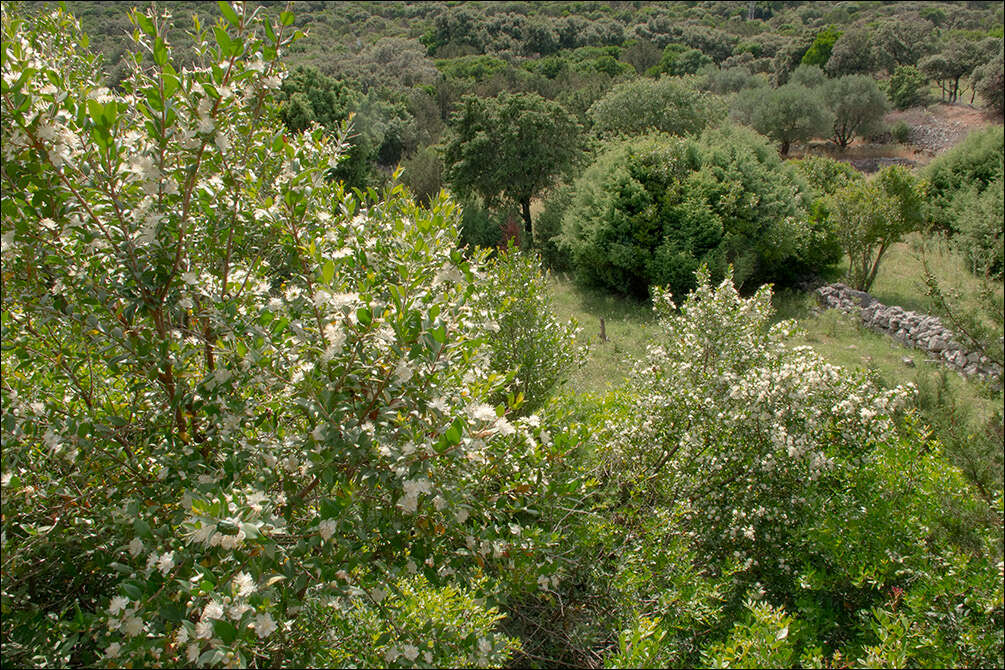
Myrtus communis ssp. communis L., syn.: Myrtus acuta Mill., Myrtus acutifolia (L.) Sennen & Teodoro and about 50 other namesFamily: MyrtaceaeEN: Common Myrtle, Corsican Pepper, DE: Echte MyrteSlo.: navadna mirtaDat.: July 03. 2013Lat.: 44.63677 Long.: 14.39346Code: Bot_0729/2013_IMG3599Place: Adriatic Sea, island Loinj, south of village St. Jakov, next to the trail and about halfway to the south beach of the village, Kvarner archipelago, Rijeka region, Croatia. Substratum: soil.Comment (pertains to pictures in the Flickr album Myrtus communis): Myrtus communis is an important plant in several old cultures from antic times on it is a symbol of beauty, peace and love since classical times. It is known and has been cultivated and adorned in Mediterranean region for a very long time, so that botanists actually do not know exactly where the plant origins. Namely, Myrtaceae are predominantly tropic and sub-tropic plants. Some professionals believe that it is an autochthone species in Mediterranean region, others think that it was brought from Asia millennia ago. Today it is known from all countries around the Mediterranean Sea. It is rare in Slovenia but very common in Croatia, particularly on the Adriatic islands. Flowering bushes are very beautiful in spring time, but also evergreen, shiny leaves and bluish-black berries when ripe do not fall behind. Leaves, bark and berries of this plant contain fragrant etheric oils, which are widely used in cosmetic products. In close contact with humans for so long time many other uses of this extraordinary plant have been developed.Ref.:(1) T. Nikoli, Flora Croatica, Vaskularna flora Republike Hrvatske, Vol. 3. Alfa d.d.. Zagreb (2020) p 173,(2) M. Blamey, C. Grey-Wilson, Wild Flowers of the Mediterranean, A & C Black, London (2005), p 150.(3) W.K. Rottensteiner, Exkursionsflora fr Istrien, Verlag des Naturwissenschaftlichen Vereins Krten (2014), p 604.(4) A. Martini et all., Mala Flora Slovenije (Flora of Slovenia - Key) (in Slovenian), Tehnina Zaloba Slovenije (2007), p 328. (5) R. Brus, Drevesa in grmi Jadrana (Trees and bushes of Adria) (in Slovene), Modrijan Pub, (2012), p 303.
-
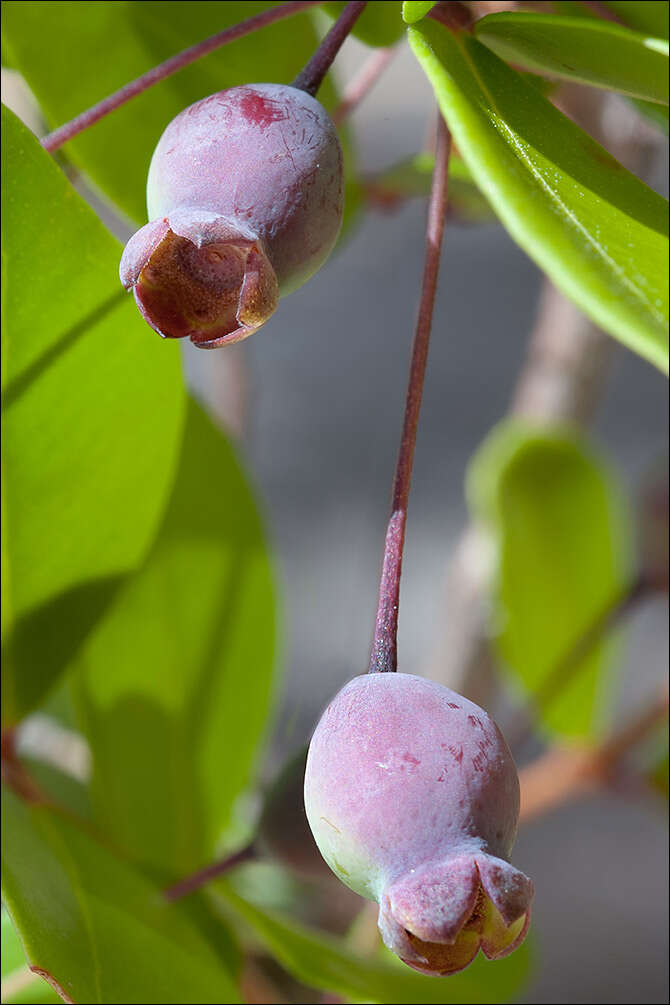
Myrtus communis ssp. communis L., syn.: Myrtus acuta Mill., Myrtus acutifolia (L.) Sennen & Teodoro and about 50 other namesFamily: MyrtaceaeEN: Common Myrtle, Corsican Pepper, DE: Echte MyrteSlo.: navadna mirtaDat.: Aug. 26. 2013Lat.: 44.64323 Long.: 14.39705Code: Bot_0746/2013_DSC7734Place: Adriatic Sea, island Loinj, north outskirts of village St. Jakov, near village graveyard, Kvarner archipelago, Rijeka region, Croatia. Habitat: macchia, almost flat terrain; calcareous, skeletal ground; sunny, warm and dry place; elevation 12 m (40 feet) (1) and 40 m (130 feet) (2); average precipitations ~ 1.000 mm/year, average temperature 12-14 deg C, Sub-Mediterranean phytogeographical region. Substratum: soil.Comment (pertains to pictures in the Flickr album Myrtus communis): Myrtus communis is an important plant in several old cultures from antic times on it is a symbol of beauty, peace and love since classical times. It is known and has been cultivated and adorned in Mediterranean region for a very long time, so that botanists actually do not know exactly where the plant origins. Namely, Myrtaceae are predominantly tropic and sub-tropic plants. Some professionals believe that it is an autochthone species in Mediterranean region, others think that it was brought from Asia millennia ago. Today it is known from all countries around the Mediterranean Sea. It is rare in Slovenia but very common in Croatia, particularly on the Adriatic islands. Flowering bushes are very beautiful in spring time, but also evergreen, shiny leaves and bluish-black berries when ripe do not fall behind. Leaves, bark and berries of this plant contain fragrant etheric oils, which are widely used in cosmetic products. In close contact with humans for so long time many other uses of this extraordinary plant have been developed.Ref.:(1) T. Nikoli, Flora Croatica, Vaskularna flora Republike Hrvatske, Vol. 3. Alfa d.d.. Zagreb (2020) p 173,(2) M. Blamey, C. Grey-Wilson, Wild Flowers of the Mediterranean, A & C Black, London (2005), p 150.(3) W.K. Rottensteiner, Exkursionsflora fr Istrien, Verlag des Naturwissenschaftlichen Vereins Krten (2014), p 604.(4) A. Martini et all., Mala Flora Slovenije (Flora of Slovenia - Key) (in Slovenian), Tehnina Zaloba Slovenije (2007), p 328. (5) R. Brus, Drevesa in grmi Jadrana (Trees and bushes of Adria) (in Slovene), Modrijan Pub, (2012), p 303.
-

Myrtus communis ssp. communis L., syn.: Myrtus acuta Mill., Myrtus acutifolia (L.) Sennen & Teodoro and about 50 other namesFamily: MyrtaceaeEN: Common Myrtle, Corsican Pepper, DE: Echte MyrteSlo.: navadna mirtaDat.: Aug. 26. 2013Lat.: 44.64323 Long.: 14.39705Code: Bot_0746/2013_DSC7734Place: Adriatic Sea, island Loinj, north outskirts of village St. Jakov, near village graveyard, Kvarner archipelago, Rijeka region, Croatia. Habitat: macchia, almost flat terrain; calcareous, skeletal ground; sunny, warm and dry place; elevation 12 m (40 feet) (1) and 40 m (130 feet) (2); average precipitations ~ 1.000 mm/year, average temperature 12-14 deg C, Sub-Mediterranean phytogeographical region. Substratum: soil.Comment (pertains to pictures in the Flickr album Myrtus communis): Myrtus communis is an important plant in several old cultures from antic times on it is a symbol of beauty, peace and love since classical times. It is known and has been cultivated and adorned in Mediterranean region for a very long time, so that botanists actually do not know exactly where the plant origins. Namely, Myrtaceae are predominantly tropic and sub-tropic plants. Some professionals believe that it is an autochthone species in Mediterranean region, others think that it was brought from Asia millennia ago. Today it is known from all countries around the Mediterranean Sea. It is rare in Slovenia but very common in Croatia, particularly on the Adriatic islands. Flowering bushes are very beautiful in spring time, but also evergreen, shiny leaves and bluish-black berries when ripe do not fall behind. Leaves, bark and berries of this plant contain fragrant etheric oils, which are widely used in cosmetic products. In close contact with humans for so long time many other uses of this extraordinary plant have been developed.Ref.:(1) T. Nikoli, Flora Croatica, Vaskularna flora Republike Hrvatske, Vol. 3. Alfa d.d.. Zagreb (2020) p 173,(2) M. Blamey, C. Grey-Wilson, Wild Flowers of the Mediterranean, A & C Black, London (2005), p 150.(3) W.K. Rottensteiner, Exkursionsflora fr Istrien, Verlag des Naturwissenschaftlichen Vereins Krten (2014), p 604.(4) A. Martini et all., Mala Flora Slovenije (Flora of Slovenia - Key) (in Slovenian), Tehnina Zaloba Slovenije (2007), p 328. (5) R. Brus, Drevesa in grmi Jadrana (Trees and bushes of Adria) (in Slovene), Modrijan Pub, (2012), p 303.
-
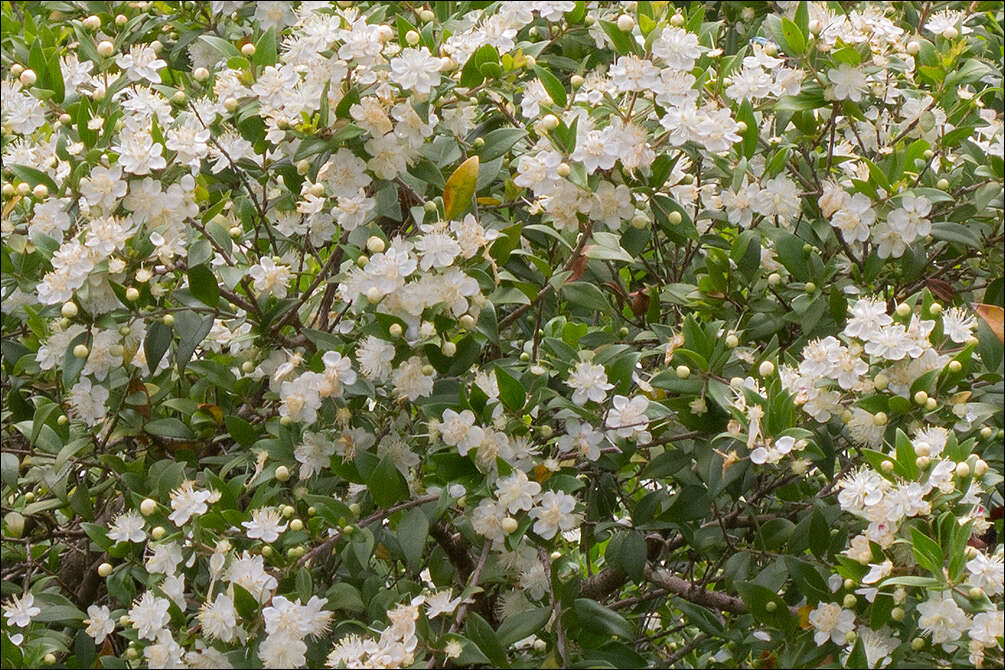
Myrtus communis ssp. communis L., syn.: Myrtus acuta Mill., Myrtus acutifolia (L.) Sennen & Teodoro and about 50 other namesFamily: MyrtaceaeEN: Common Myrtle, Corsican Pepper, DE: Echte MyrteSlo.: navadna mirtaDat.: July 03. 2013Lat.: 44.63677 Long.: 14.39346Code: Bot_0729/2013_IMG3599Place: Adriatic Sea, island Loinj, south of village St. Jakov, next to the trail and about halfway to the south beach of the village, Kvarner archipelago, Rijeka region, Croatia. Substratum: soil.Comment (pertains to pictures in the Flickr album Myrtus communis): Myrtus communis is an important plant in several old cultures from antic times on it is a symbol of beauty, peace and love since classical times. It is known and has been cultivated and adorned in Mediterranean region for a very long time, so that botanists actually do not know exactly where the plant origins. Namely, Myrtaceae are predominantly tropic and sub-tropic plants. Some professionals believe that it is an autochthone species in Mediterranean region, others think that it was brought from Asia millennia ago. Today it is known from all countries around the Mediterranean Sea. It is rare in Slovenia but very common in Croatia, particularly on the Adriatic islands. Flowering bushes are very beautiful in spring time, but also evergreen, shiny leaves and bluish-black berries when ripe do not fall behind. Leaves, bark and berries of this plant contain fragrant etheric oils, which are widely used in cosmetic products. In close contact with humans for so long time many other uses of this extraordinary plant have been developed.Ref.:(1) T. Nikoli, Flora Croatica, Vaskularna flora Republike Hrvatske, Vol. 3. Alfa d.d.. Zagreb (2020) p 173,(2) M. Blamey, C. Grey-Wilson, Wild Flowers of the Mediterranean, A & C Black, London (2005), p 150.(3) W.K. Rottensteiner, Exkursionsflora fr Istrien, Verlag des Naturwissenschaftlichen Vereins Krten (2014), p 604.(4) A. Martini et all., Mala Flora Slovenije (Flora of Slovenia - Key) (in Slovenian), Tehnina Zaloba Slovenije (2007), p 328. (5) R. Brus, Drevesa in grmi Jadrana (Trees and bushes of Adria) (in Slovene), Modrijan Pub, (2012), p 303.

